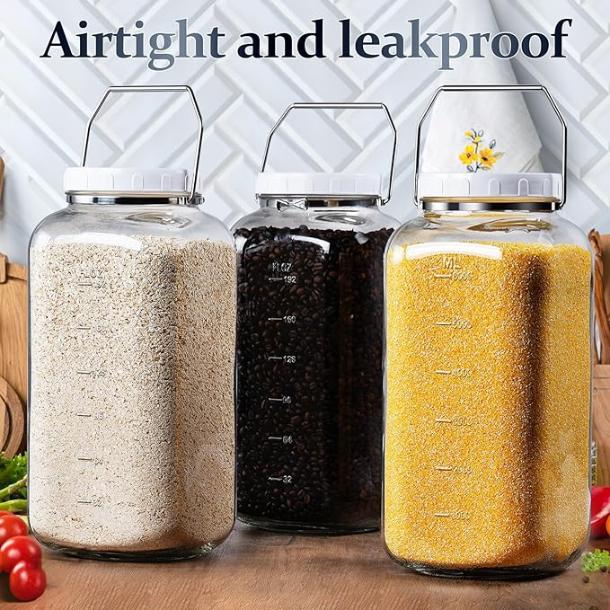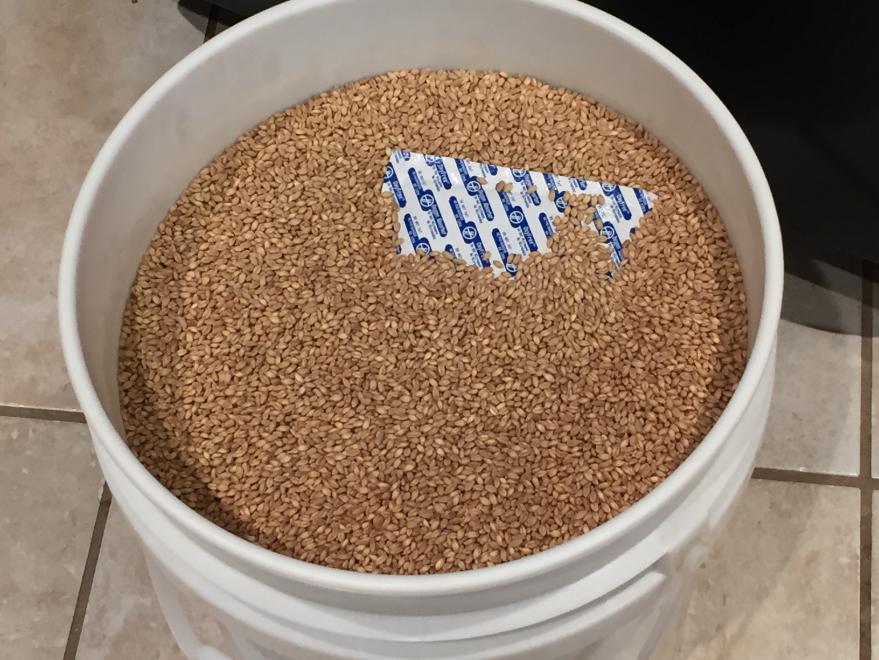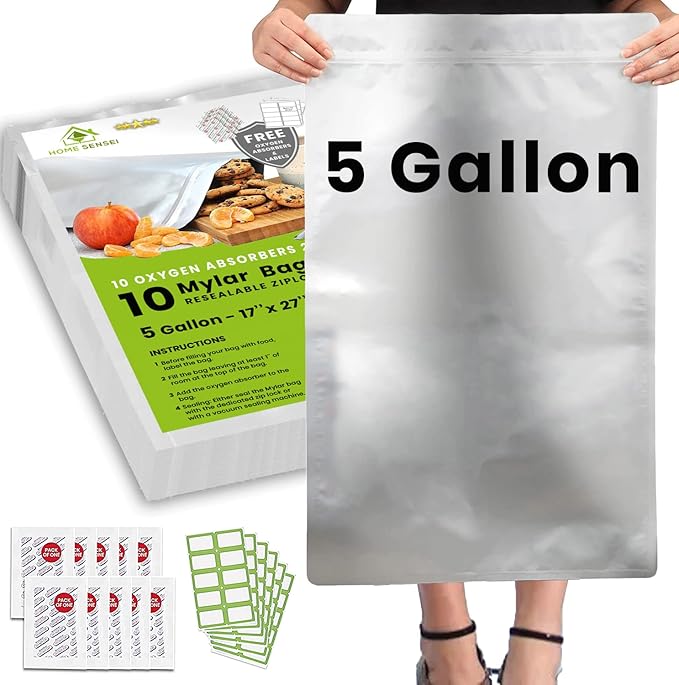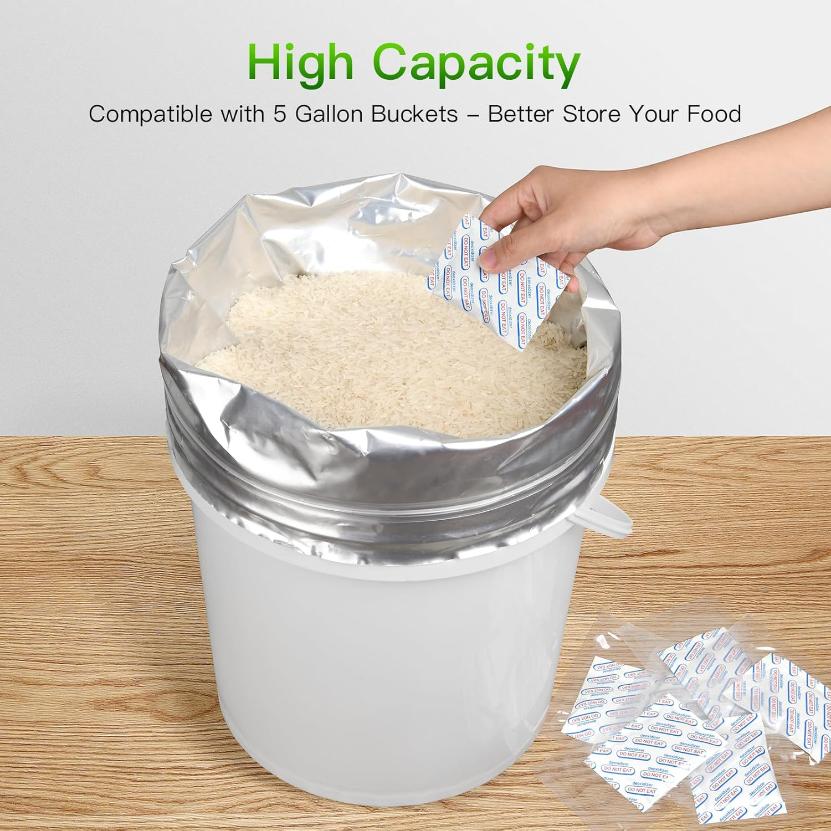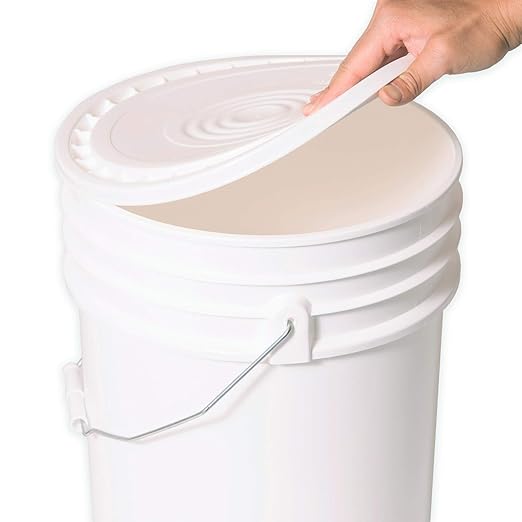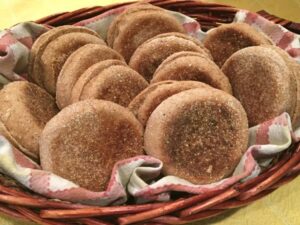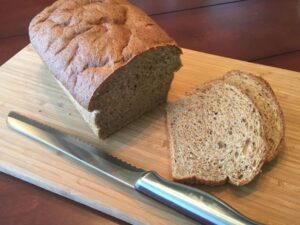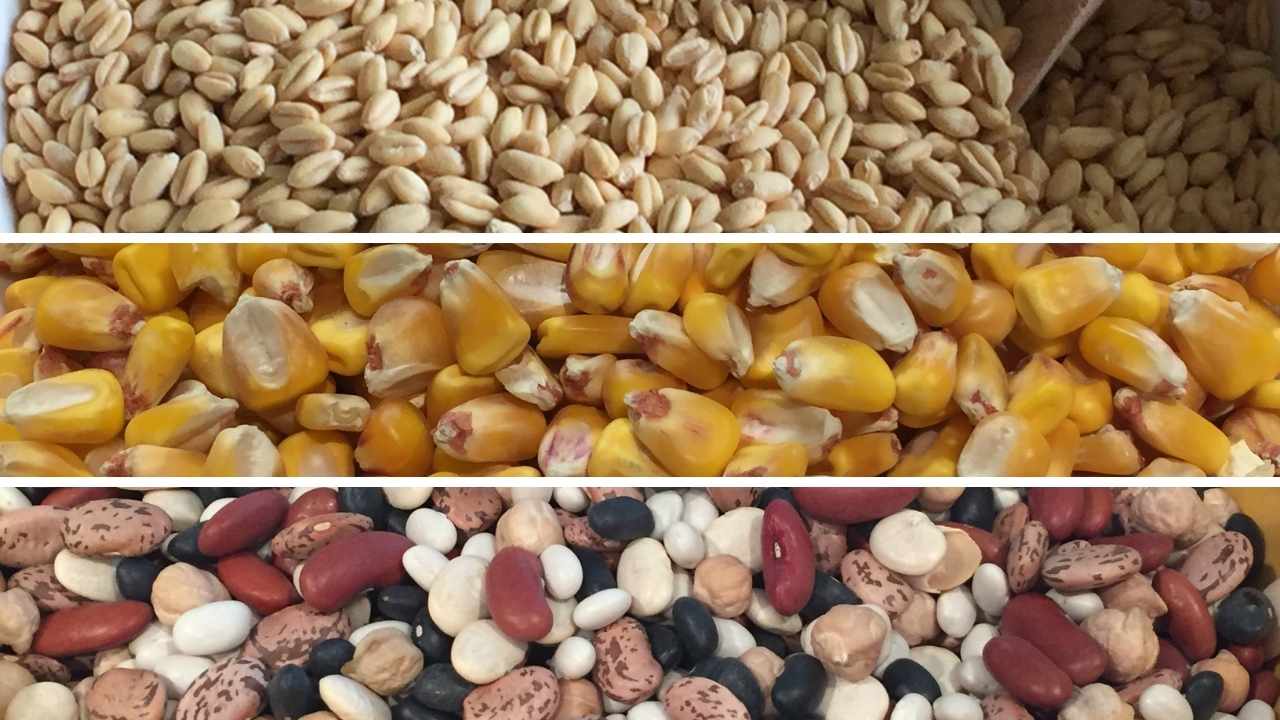
Home > Milling Grains > Buying and Storing Whole Grains Corn & Beans
Buying and Storing Whole Grains, Corn & Beans
Do you have your grain mill?
Are you ready to get started?
Great!
In case you didn’t know, whole grains are sometimes referred to as: berries, kernels or seeds. There is a plethora of grains from which to choose: wheat and rye, ancient grains such as spelt and emmer; gluten-free: brown rice and millet; some grains that are really seeds: buckwheat and quinoa, just to name a few.
Then, of course, there are corn and beans. Not saying beans are a grain, but they can certainly be ground into flour in your home mill. Bean flour may be added to your baked goods and makes a deliciously nutritious gravy thickener.
Dried whole grains, corn and beans will last for quite sometime, even years, if properly prepared and stored. This page will give you the info you need for buying and storing whole grains, corn and beans correctly.
Table of Contents
Buying Grains, Corn & Beans
Since pesticides and wacky commercial fertilizers are never good for the body, so, I try to buy organic when possible. Also, there are some suppliers which may not be officially organic, but practice good farming without all that bad stuff.
WHOLE GRAINS
When purchasing whole grains, do your research.
Make sure the grain you are getting is “clean”, meaning, free of stones and other debris. Stones and such can damage your grain mill.
If you are getting started, my recommendation is to begin with hard white wheat and hard red wheat. They are very versatile. For detailed grains information and such visit my page: Getting Started Milling Whole Grains.
CORN
Corn, unfortunately, most of the commercially grown corn in the US is now GM (genetically modified). Too scary if you ask me! So, we ONLY use organic corn.
BEANS
Beans – It’s a mixture on the bean front, so, again, try to go for organic when available.
Where to Buy Grains, Corn & Beans
There are several purchasing options available depending on your location:
FOOD CO-OPS – The most cost effective place to purchase whole grains, corn & beans is to buy in bulk, usually through a food co-op. A food co-op is a group who order on a specific day, typically, once a month. The order is then shipped by semi-truck to a drop location on a designated day where people gather to pickup their orders.
Buying this way avails one to discounted pricing and shipping/freight is much more affordable.
LOCAL HEALTH FOOD or WHOLE FOOD STORES – Many local health food stores stock whole grains/beans and other baking supplies. If yours does not, then ask if they can order for you.
GRAIN DISTRIBUTOR – Typically the best pricing. Living near a grain distributor is a blessing, great prices, no shipping and so convenient.
ONLINE/MAIL ORDER – There is a fair number of sites/stores which offer whole grains & beans such as Amazon. Depending on the site/store the shipping cost can be as much as the bag of grain itself. So do some price comparing.

Azure Standard Co-Op is a food co-op. I buy from Azure Standard; a drop near the Gulf coast. They offer not just bulk, 25-50 lbs; but you can get a 5 lb bag of grain if that’s all you need.
Azure Standard is kind of like a whole foods/organic store and a farm/pet/garden rolled into one. Simply set up an account, place items in your cart, enter the drop location number which applies to your area, then checkout. Easy peasy! Azure ships all over the country.
I’ve been a member with Azure since 2014 and have never had problems with Azure Standard grains.
How Long to Store
Dried whole grain, corn and beans may be stored long-term by taking the following safeguards:
WHOLE GRAINS & CORN – may be stored for long periods, approximately 10-30+ years. Yes, years. The key is keeping them sealed, cool and dry.
Bran, the outer shell of grains & corn is hard, acting as a protective shield. As long as that strong outer coating is kept intact, cool and dry, and secured from critters, then, grains & corn can last quite a long time with their nutritional bounty unharmed.
Note: There are many sites that state that grains should only be stored for short periods of time; not true. I have stored grain for many years with zero integrity loss. Could it be they are just trying to sell more product? Just saying.
DRIED BEANS – Unlike grains/corn, beans are not ‘immortal’. Remember, beans were fresh when harvested; we dry them to extend their shelf-life. Yes, they also have an outer shell of protection; however, beans contain more moisture which decreases after about 1-2 years. This moisture loss makes them tougher thus requiring longer soaking and cooking time than fresher dried beans. The older beans usually become chewier and depending on the age of the bean, some never seem to soften even after extended cooking. Of course each type of bean has its own time limit, so be mindful of their packaging date.
Note: Dried beans may also be stored sort-of long-term similar to grains and corn with special precautions, but because the bean’s outer shell is softer some nutritional loss can take place.

How to Store Grains, Corn & Beans
Before you purchase your grain, corn and beans you must consider how and where you will be storing them to maintain their quality and freshness. Short-Term vs Long-Term storage will also be part of the storage container equation.
Storage Containers
All stored grains and beans require a cool moisture-free environment to avoid bugs and spoilage.
Storage Capacity
2-Gallon: 5 lbs
3.5-Gallon: 10 lbs (appx)
5-Gallon: 25 lbs
6-Gallon: 50 lbs (appx)
Food Grade Plastic Buckets or Pails
FOOD GRADE PLASTIC BUCKETS – Buckets or pails are great for short-term and the best options for long-term storage use.
Bulk grains/beans can come in food-grade buckets/pails, heavy plastic or double paper bags. If they come in a bag they cannot stay that way for long because bugs/critters and moisture can get to them.
For everyday grain usage, a food-grade bucket/pail with a Gamma/Leaktite screw type lid. For daily convenience smaller quantities may be stored in a well sealed container on the counter, working from your bulk container pail.
Store your bulk grains/beans in #2 HDPE High-Density Polyethylene – food grade plastic buckets with a lid that has a rubber gasket to seal out any pests or moisture.
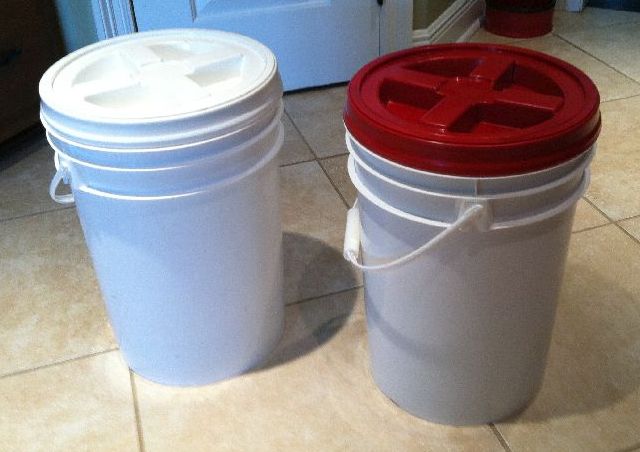
Glass Jar Containers
GLASS JAR TYPE CONTAINERS – Glass jars make a great options for storing grains and beans. They’re pretty too. The down side might be size and price. So, I reserve my glass containers for my short-term use. Also, it’s best if the lid has a good seal to keep out moisture. Here on the Gulf, high humidity is a definite problem.
Storage Location
LOCATION – The best storage location is a pantry or an interior closet; you are looking for cool and dry.
Buckets may be stored in the garage, however, get them up off the concrete floor by setting them on 2×4 boards to keep air circulating and prevent moisture from collecting on the buckets in humid environments/seasons.
It is NOT RECOMMENDED to store buckets in the laundry room; too warm and humid. Bugs love that!
Bug & Moisture Control
BUG & MOISTURE CONTROL – Unfortunately, weevil eggs and such are typically already in grains from the fields; they hatch when the conditions are right: oxygen, warm & humid.
For long-term storage it is recommended to use oxygen absorbers and Mylar bags.
OXYGEN ABSORBERS – Oxygen absorbers do just that, removes the oxygen. By using the oxygen packs before sealing your buckets for long-term storage can help deter them from hatching.
To use: Shake/shimmy down the grain in the bucket, place oxygen pack(s) on top of the grain, then seal with standard long-term lid having a rubber gasket.
Note: Only use the absorbers when storing for a long time and using a regular lid with a rubber gasket. Gamma or Leaktite lids can be used for long storage, but kinda pricy to sit in a closet unused. Go for the standard lid. (see section on lids below). Once a bucket with oxygen absorbers has been opened the absorbers will no longer be effective.
MYLAR BAGS – Mylar bags are made from 3-15 mil polyester film. They are flexible, resealable and protect against light, moisture and bugs.
Mylar bag used to line the inside of food grade bucket/pail helps add an extra layer of protection.
You simply slide the Mylar bag down into your plastic food grade bucket/pail, add oxygen pack(s), then seal her up. You still need the lid with a rubber gasket for a complete seal.
When purchasing, make sure to get 5-6 gallon size bags. They make lots of different sizes.
FREEZER – Another option is to place your new grains in the freezer for at least 72 hrs. This method will kill any bugs/eggs in the grain/beans. Remove the bag, thaw completely, then store in food grade bucket with rubber gasket lid.
Caution: After removing from the freezer, you must let the packaging come to complete room temperature with NO MOISTURE before pouring into your bucket. You do not want to trap any moisture in there.
Lids for Buckets/Pails
The Lid can matter.
SHORT-TERM or REGULAR USAGE LIDS – Use a Gamma or Leaktite screw lid for easy daily access of your bucketed grains and beans. These types of lids consist of a ring and screw-type lid, each with a rubber gasket.
Simply snap the ring onto your bucket (you may need a rubber mallet to seat the ring completely), then screw on the lid to seal. When you’ve emptied your bucket, open the next sealed bucket and pour it into the bucket with the Gamma lidded bucket. You can discard any oxygen packs because they are now spent and no longer useful.
Gamma Lids are available in many sizes and different colors. You can color-code your buckets; I do. i.e. White lid – Hard white wheat, Red lid – Hard Red wheat, Yellow – Soft White wheat, etc. I’m OCD like that.
Leaktite Lids may only come in white and black.
LONG-TERM LIDS – Long-term lids are the typical bucket lids; like on a big bucket of paint. It has a deep seating groove. You may need a rubber mallet to seal the lid on properly. This type lid is not very convenient for daily use.
When using the oxygen absorbers, often the lid will sink inward or dip down. This is normal and a good sign the absorbers are doing their job.
A lid-lifter is very helpful to remove these sealed lids.
LABEL YOUR BUCKETS - Be sure to label your bucket with:
-Grain/bean type
-Date of purchase
-Purchased from info
So you can rotate your stock. I use masking tape and a Sharpie.
Where to Buy Storage Supplies
Food-grade buckets/pails and lids are available in different sizes like: 2-gallon up to 7-gallon. Buckets/pails, regular lids and Gamma lids can definitely be found on-line, in addition health food and hardware stores carry them in-stock. Call the store first for availability and don’t forget to price compare.
Most of the following information may be redundant from above, but I felt it important to designate a section for quick ease of reference.
Storage Capacity
What size do you need? Consider these measures when purchasing.
2-Gallon: 5 lbs
3.5-Gallon: 10 lbs (appx)
5-Gallon: 25 lbs
6-Gallon: 50 lbs (appx)
Food-Grade Buckets/Pails
Food-grade buckets/pails will have a number stamped on the bottom inside a triangle. Pails marked ‘2’ are made of high-density polyethylene, HDPE, are the best choice for grain and bean storage.
FOOD CO-OP – Often they are carried by food co-ops such as:
Azure Standard: 2-Gallon – 3.5 Gallon – 5-Gallon
HARDWARE STORES – Hardware stores carry them in the paint section, sometimes at a better price-point. Make sure you get FOOD-Grade; so, check it’s label carefully.
Lowe’s: 2-Gallon – 5-Gallon
Home Depot: 5-Gallon
ONLINE – Of course they may be purchased online. Because buckets/pails are bulky, shipping cost can be a big factor.
Amazon: 2-Gallon to 5-Gallon
OTHER SIZES – These storage buckets do come in a variety of sizes depending on your needs: 2-gallon, 3.5-gallon and even 7-gallon.
Glass Containers
Again, glass containers can be a great option for everyday use. Glass can be quite heavy in addition to its contents. Keep that in mind when choosing. Glass of course comes in all sizes and shapes; just make sure the lid is air tight.
AMAZON – 2-Gallon
Bucket Lids
Consider how you will be storing: everyday use or long-term
Gamma Lids and Leaktite Lids – Ring and screw-on
Azure Standard – Note: the colors they offer are random; you can not choose.
Amazon – Lots of color choices
Lowes
Home Depot
Standard – Press-on
Azure Standard
Amazon
Lowes
Bug & Moisture Control
In Conclusion
I have been milling grains, corn and beans for many years and I just love it! It has changed my life. Trying new grains and beans is so fun; it’s like being in a candy shop, so many choices.
I hope you are stepping out in this wonderful adventure of milling your own fresh flour and meals. I know you will find it just as rewarding as I do!
Check out my other pages on Milling Grains.
Let me know in the comments if you have any questions about buying and storing grains, corn and beans. I’m hear to help. 😊


